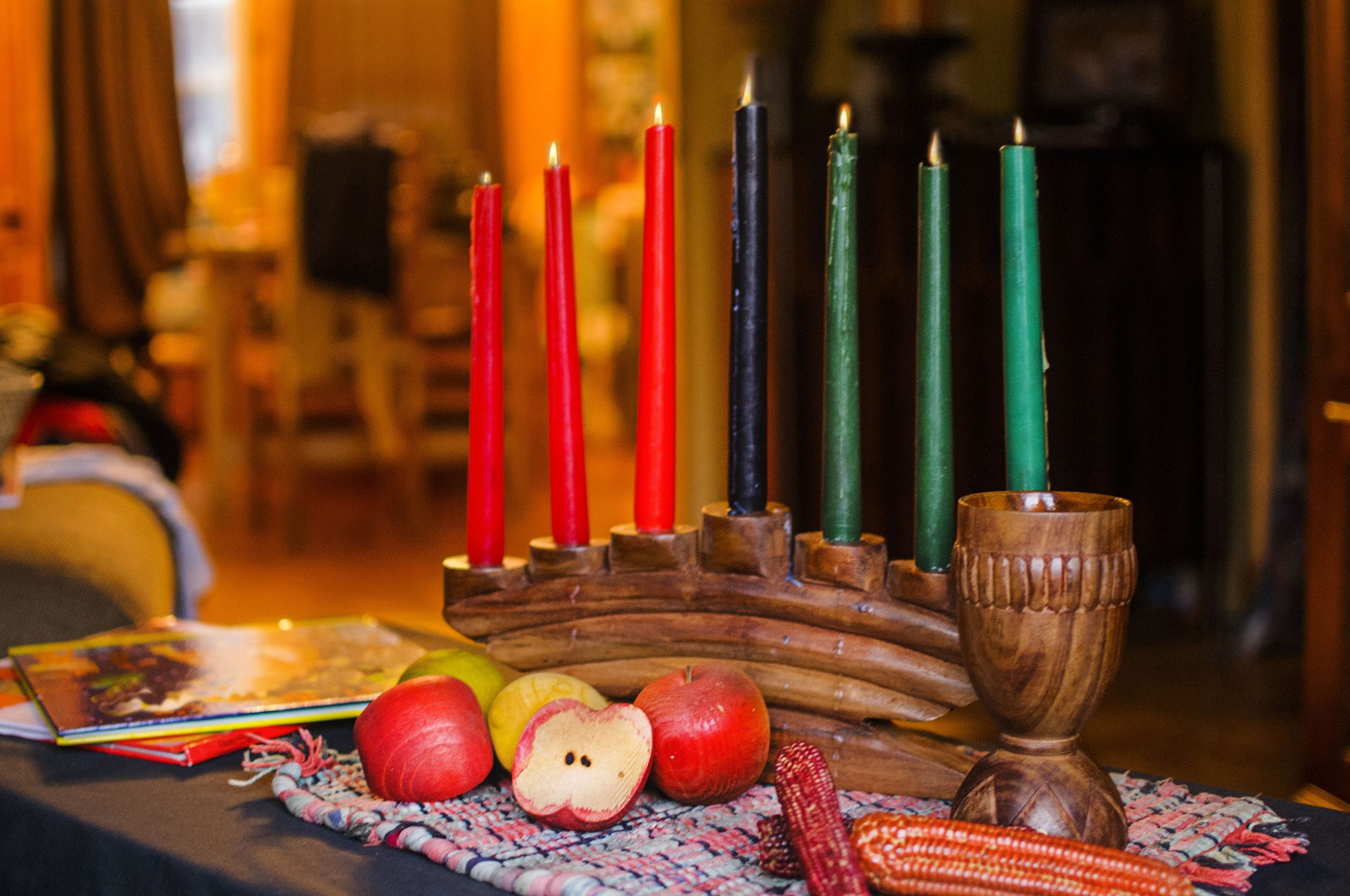In Touch with Kwanzaa

By Betty Miller Buttram
FWIS Contributing Writer
The time of turmoil was in the summer of 1965 when the news of a predominantly African American community known as Watts located in Los Angeles, California came to the attention of the media and the rest of the world. The people in the Watts neighborhood were feeling angry about the crumbling houses, low-paying jobs, and racism that they had been facing for years. The people felt no one had been listening to them and that their voices were not being heard by the local officials. On a hot summer night on August 11, 1965, Los Angeles’s police officers arrested an African American motorist, Marquette Frye, and some bystanders felt that Frye was treated too roughly by the police. After years of having been disenfranchised by their local government, Frye’s arrest set off the boiling points of anger. A riot broke out.
The riot continued for four days and during that time, 4,000 people were arrested, hundreds were injured, and 34 were killed. Many buildings in the community were looted and set on fire, cars were overturned, and many windows were broken. There was more than two hundred million dollars’ worth of property damage and loss. When the riot was finally over, many places in the community were nothing but smoke, ashes, broken glass, and hundreds of people were left homeless. Businesses were closed and many later moved to other locations. Watts looked like a war zone.
In the aftermath of the riot, a change began in Watts. African Americans in Watts and across the city of Los Angeles joined together with a purpose to rebuild Watts and to make it a stronger and better community. A young African American man was a year into his doctoral studies during the Watts riot, and after the riots, he wanted to help rebuild Watts and bring African Americans together.
Dr. Maulana Karenga (birth name Ronald McKinley Everett) was born on July 14, 1941, in Parsonsburg, Maryland. He was the 14th child and seventh son in the family. His father was a Baptist minister and a sharecropper. Dr. Karenga moved to Los Angeles in 1959, joining his older brother who was a teacher there. He earned BA and MA degrees in political science at UCLA. He studied Swahili, Arabic, and other African-related subjects. He took the Swahili-Arabic name of Maulana because it means master teacher. The Swahili name of Karenga means keeper of tradition.
Dr. Karenga created Kwanzaa in 1966. He wanted to give African Americans an opportunity to celebrate themselves and their history. The ritual of Kwanzaa promotes African traditions and the seven principles of African heritage:
UMOJA (unity): To strive for and maintain unity in the family, community, nation, and race.
KUJICHAGULA (self-determination): To define ourselves, name ourselves, create for ourselves, and speak for ourselves.
UJIMA (collective work and responsibility): To build and maintain our community together and make our brother’s and sister’s problems our problems and to solve them together.
UJAMAA (cooperative economics): To build and maintain our own stores, shops, and other businesses and to profit from them together.
NIA (purpose): To make our collective vocation the building and development of our community to restore our people to their traditional greatness.
KUUMBA (creativity): To do always as much as we can, in a way we can leave our community more beautiful and beneficial than we inherited it.
IMANI (faith): To believe with all our hearts in our people, our parents, our teachers, our leaders, and the righteousness and victory of our struggle.
The seven principles of Kwanzaa are celebrated from December 26th through January 1st and a Kwanzaa table is set. A traditional straw mat (mkeka) is placed on the table. On top of the mat, a Kwanzaa candleholder (kinara) holds seven candles for each night of Kwanzaa and the celebration of the seven principles. A black candle is in the middle, three red candles on the left, and three green candles on the right. The three colors stand for different things: black for African American people, red for their struggles, and green for hope and a good future. Also, on the table is the Unity Cup. Fruits and vegetables (mazao) are placed on the mat and represent the harvest and the importance of working together. The harvest festival in African tribes was a way of rewarding all the tribe members for their teamwork during the year. Ears of corn (muhindi) represent the children in the family. The black candle is lit the first night celebrating the first principal, Unity. A few drops of water are poured from the Unity Cup into a plant to remember and honor the ancestors. This is called Libation. There is the greeting from the Swahili language that is used during the celebration, Habari gani, which means “What is happening today.” Gifts (zawadi) are exchanged.
On Thursday, December 1, 2024, members of the Ubuntu Learning Lab, which is based in the Richard Allen Cultural Center, Turner Chapel A.M.E. Church, were at the Weisser Youth Center and informed and explained to the elementary and middle school students about Kwanzaa. The students were engaged and focused on discussions about the seven principles, the Kwanzaa table, and the colors of the seven candles.
As of 2023, Dr. Karenga chairs the Africana Studies Department at California State University, Long Beach.
Merry Christmas, Happy Kwanzaa, and all the best for a Happy New Year!
